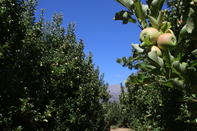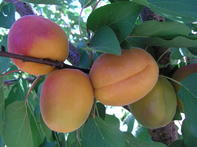Fruit Industry
Following the completion of Michell's Pass, the site for a village was laid out at the eastern entrance of the pass, and the first 20 plots were sold by public auction on 21 July 1849. Situated in a fertile basin on the banks of the Dwars River and surrounded by the Skurweberg mountains, the settlement was named after the Roman goddess of agriculture in recognition of the fertility of the land. Farmers initially concentrated on wheat production, but gradually began switching to fruit farming.
The completion of the railway line between Ceres and Wolseley in 1912 provided a tremendous boost to the fruit industry, and Ceres is today one of the biggest deciduous fruit-producing districts in the country. The area is especially known for its pears, but also produces large quantities of other fruits such as apples, peaches, apricots, plums and cherries. Given the abundance of fruit, it is not surprising that about 80 per cent of South Africa's fruit juice is packed in Ceres.
In recent years, the district has also become a major producer of potatoes, and accounts for 40 per cent of the total production in South Africa. In winter, snow often falls in Ceres, attracting large numbers of visitors on their South African holiday.


 The Western Cape in South Africa is the largest traditional apple production region and accounts for more than half of the apple production...
The Western Cape in South Africa is the largest traditional apple production region and accounts for more than half of the apple production... In South Africa cherry farming is confined to specific areas due to the climatic requirements for this sensitive crop. Cherries need mild su...
In South Africa cherry farming is confined to specific areas due to the climatic requirements for this sensitive crop. Cherries need mild su... Peaches are native to the north-west of China. They are believed to have been domesticated along the Yangzi River, where fossilised peach st...
Peaches are native to the north-west of China. They are believed to have been domesticated along the Yangzi River, where fossilised peach st... Pears are a domestic fruit that is predominantly grown in the Western Cape region of South Africa. This fruit is in season from February to ...
Pears are a domestic fruit that is predominantly grown in the Western Cape region of South Africa. This fruit is in season from February to ...